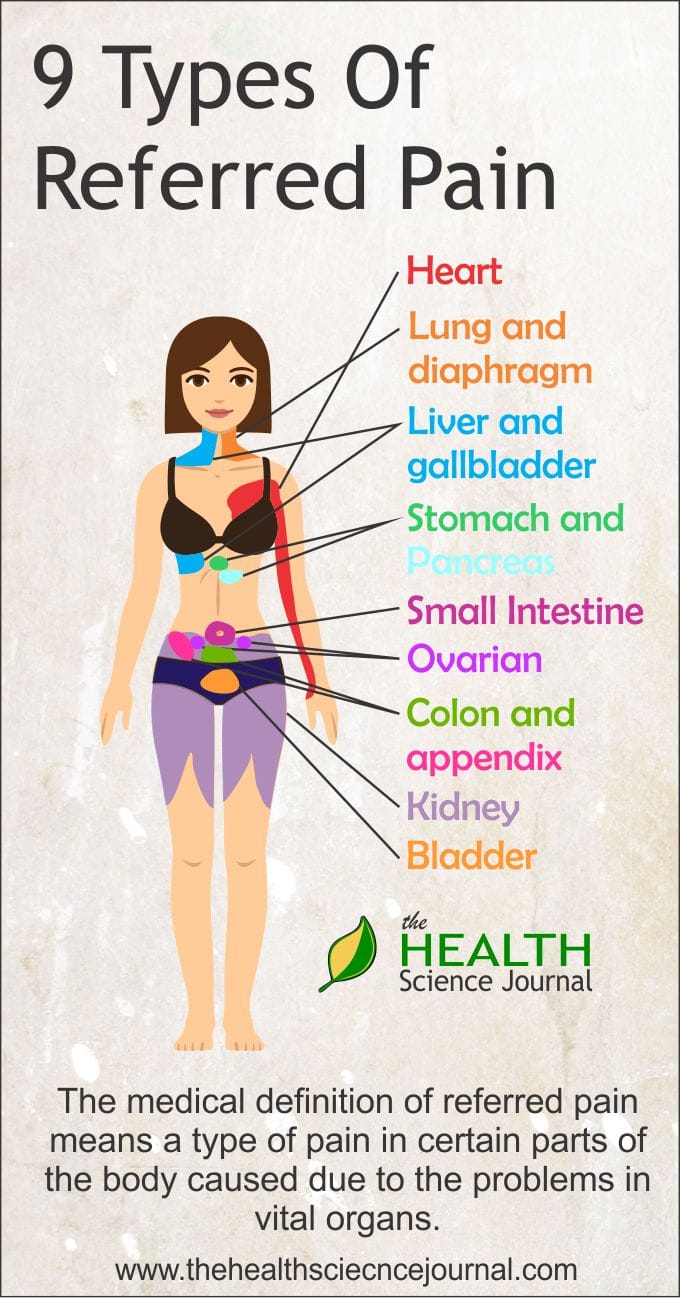You have probably heard about referred pain. This is a pain that occurs when a health issue in one part of the body causes pain in another place. Sometimes referred pain can be a sign of a serious issue. This is why it’s important to keep track of any sudden or chronic (repeating) pains.
Our office dedicated the last two weeks to work on these illustrations that offer a revealing look at referred pain in the body and potential causes.
While experiencing certain pains and discomfort is normal, if you notice the pain becoming chronic or intensifies, it usually points to an underlying issue. This is the right time to visit a doctor and get a professional opinion and possible diagnosis.
These 9 illustrations show some common pains that can potentially mask an underlying condition. If you notice some of these pains, it’s a good idea to keep track on the frequency and intensity of the pain. If you suspect either go beyond ‘normal’ discomfort (based on your age, lifestyle and physical condition) report it to your doctor as soon as you can.
1. Heart

It is hard to correctly identify and trace the cause of pain or discomfort in the chest. Is it a heart attack or another, less serious problem?
If you know you have increased risk, any pain in the chest area around the heart can potentially be a cardiac issue. However, you may also experience referred pain radiating through the left arm or in the upper-middle portion of the back. Atypical pain can also shoot to your neck and jaws (more likely with women).
Any pain associated with the heart may indicate potentially life-threatening problems that require medical attention right away.
2. Lung and Diaphragm
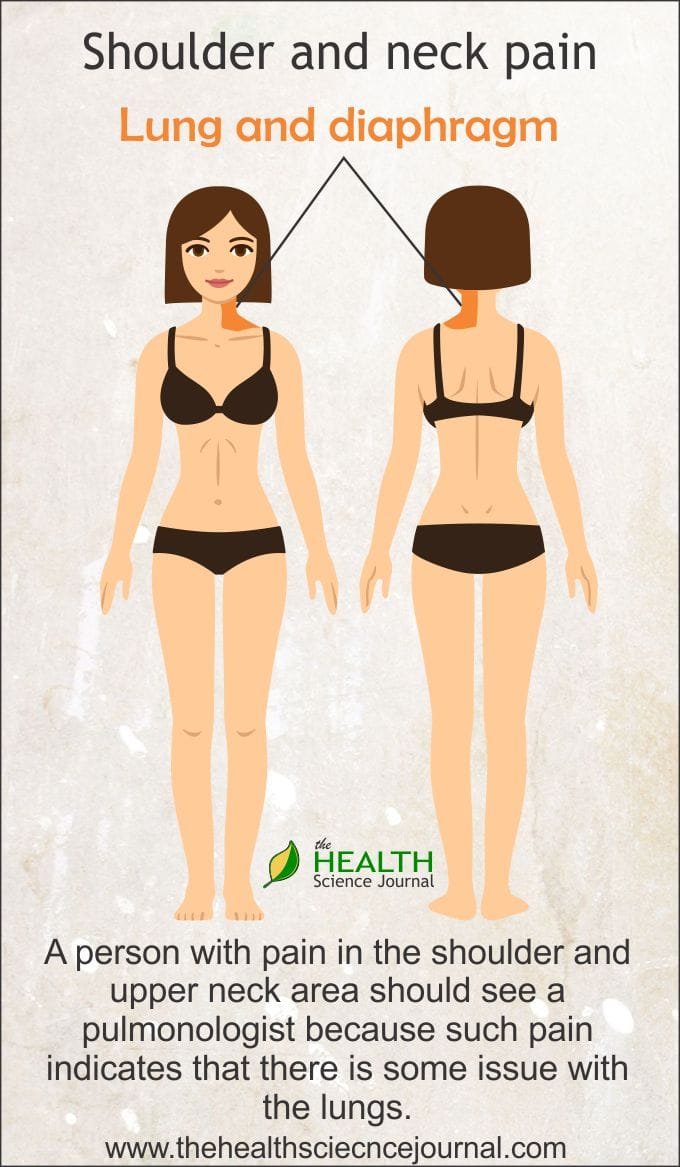
Issues with the lungs or diaphragm can cause referred pain in one side of the neck and/or upper shoulder area. This may be a consequence of breathing problems or the phrenic nerve that runs from the spine, through the lungs and to the diaphragm.
Inefficient respiration can cause this pain, but more serious lung problems are usually also joined by chest pain and sometimes dizziness, too.
On the other hand, shortness of breath without chest pain can signify the presence of high risk heart disease, while frequent shoulder pain can be a symptom of lung cancer.
Respiratory problems always need to be taken seriously and require a trip to the doctor.
3. Liver and Gallbladder
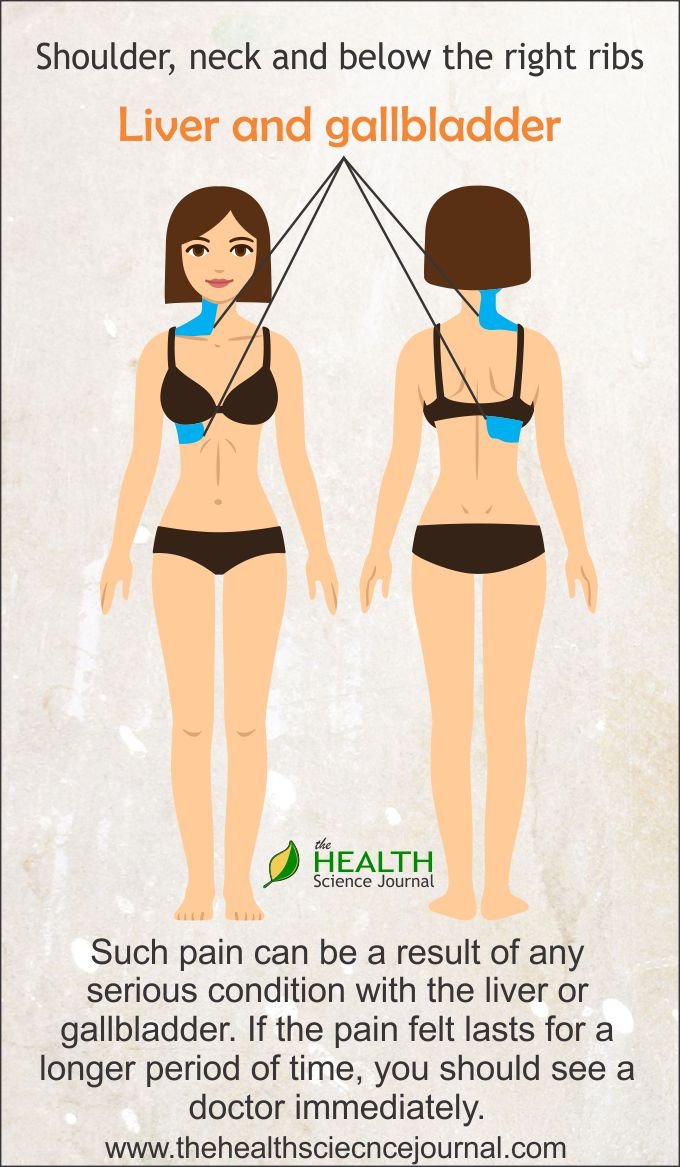
An underlying condition affecting the liver or gallbladder can also cause pain in the neck or upper shoulder areas, as well as the right side of the body, just below the nipple.
According to the University of Michigan, Michigan Medicine, “unexplained shoulder pain that does not change when you move your neck, shoulder, or arm or that occurs with symptoms elsewhere in your body (such as in your abdomen or chest) may be referred shoulder pain.“
Since both the liver and gallbladder bump up against the diaphragm, this is sometimes followed with an abdomen pain. The pain is carried to the neck and shoulder along the phrenic nerve, same as with diaphragm troubles.
For a clinical case involving referred pain from the liver/gallbladder, check these cases from the University of Stanford.
4. Stomach and Pancreas
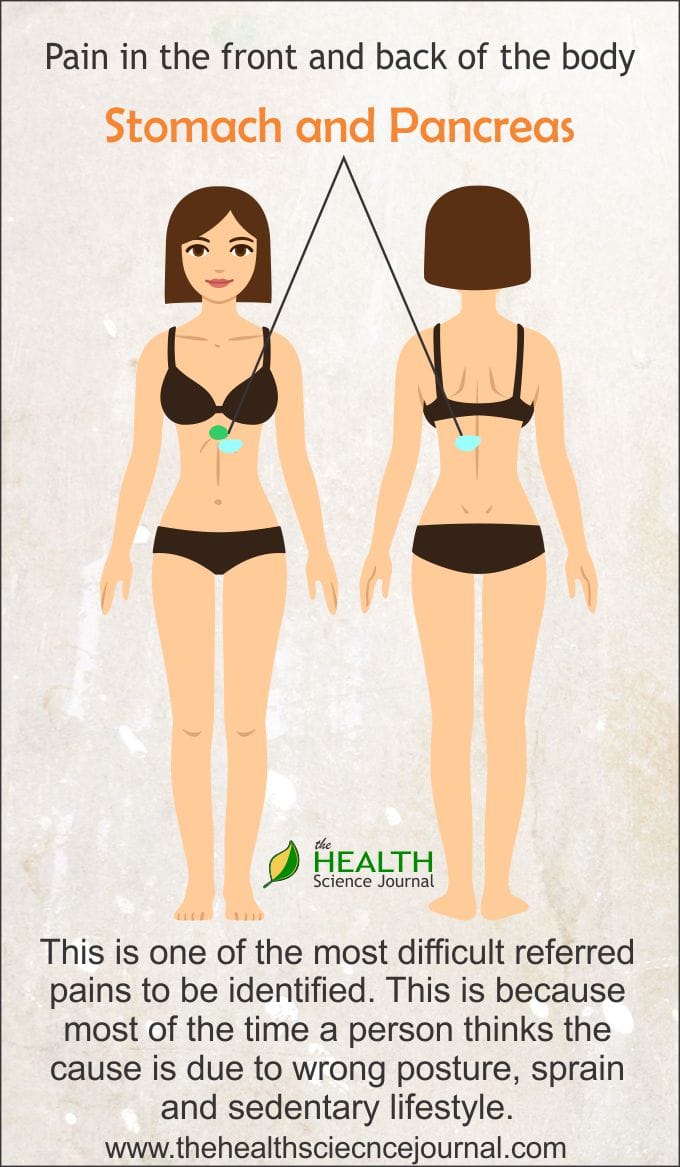
Referred pain in the illustrated areas may indicate a problem with the stomach or the pancreas.
Patients typically describe pancreatic pain as a constant, severe, dull, epigastric pain that often radiates to the back and can worsen after high-fat meals.
Physio-pedia also writes that half of the patients with acute pancreatitis experience radiating pain in the back. This can occasionally be joined by abdominal tenderness in the upper quadrants.
5. Small Intestine
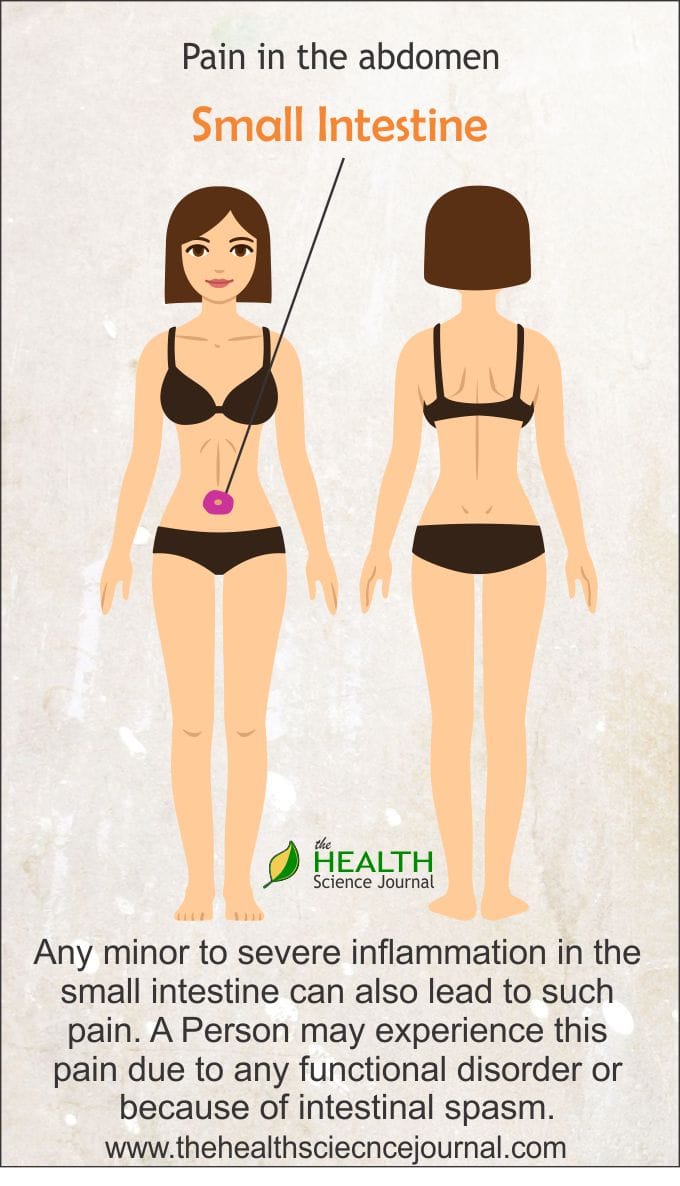
A small intestine illness may result in referred pain in the abdominal area near the belly button.
This middle abdominal pain (around the belly button) could track its cause in small intestine inflammation, intestinal spasm and functional disorders. Furthermore, pain in the area could also be referred from issues such as: appendicitis, pancreatitis, inferior myocardial infarction, peptic ulcer or diabetic ketoacidosis.
The specific area around the bellybutton can be very helpful indicator for your doctor’s diagnosis, so be sure to specify the affected area.
6. Colon and Appendix
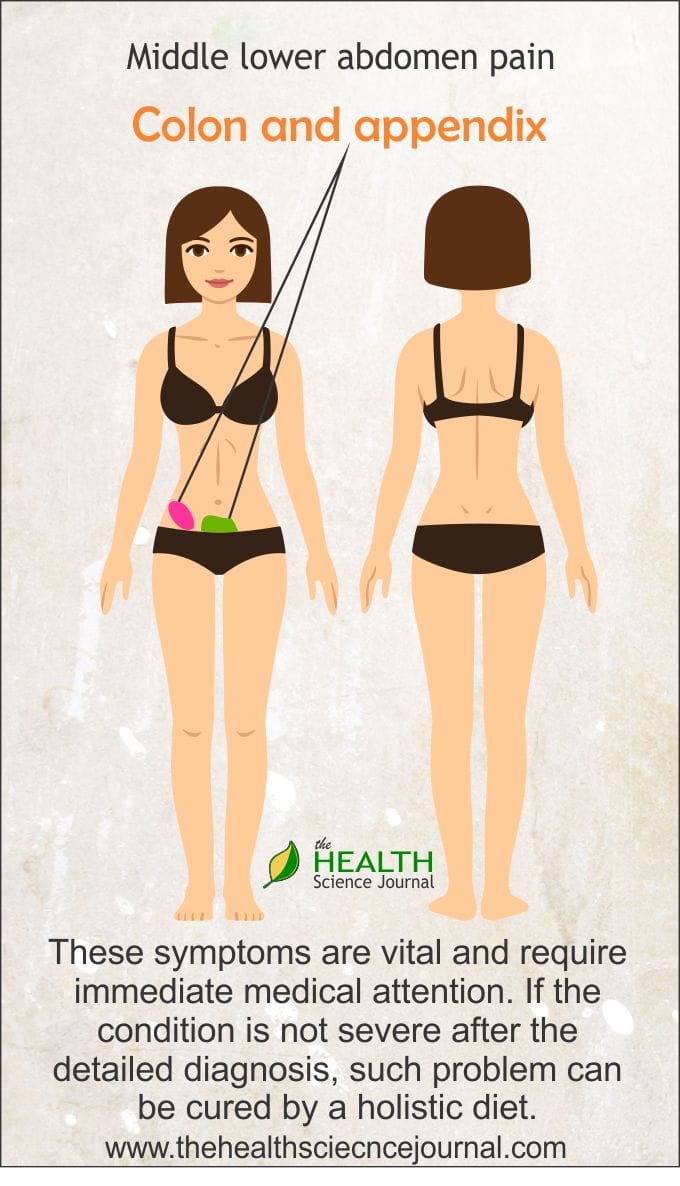
Appendicitis and problems with the colon can sometimes be associated with referred pain in these specific areas of the abdomen.
PatientPlus notes that pain in the right side of the middle-lower abdomen immediately raises suspicion of appendicitis. The World Health Organization writes that mid-gut pain could be the result of an underlying condition in the “appendix [or] right colon.”
Appendicitis can be a life-threatening emergency, so seeking immediate medical attention for pain in this area is vital.
7. Kidney
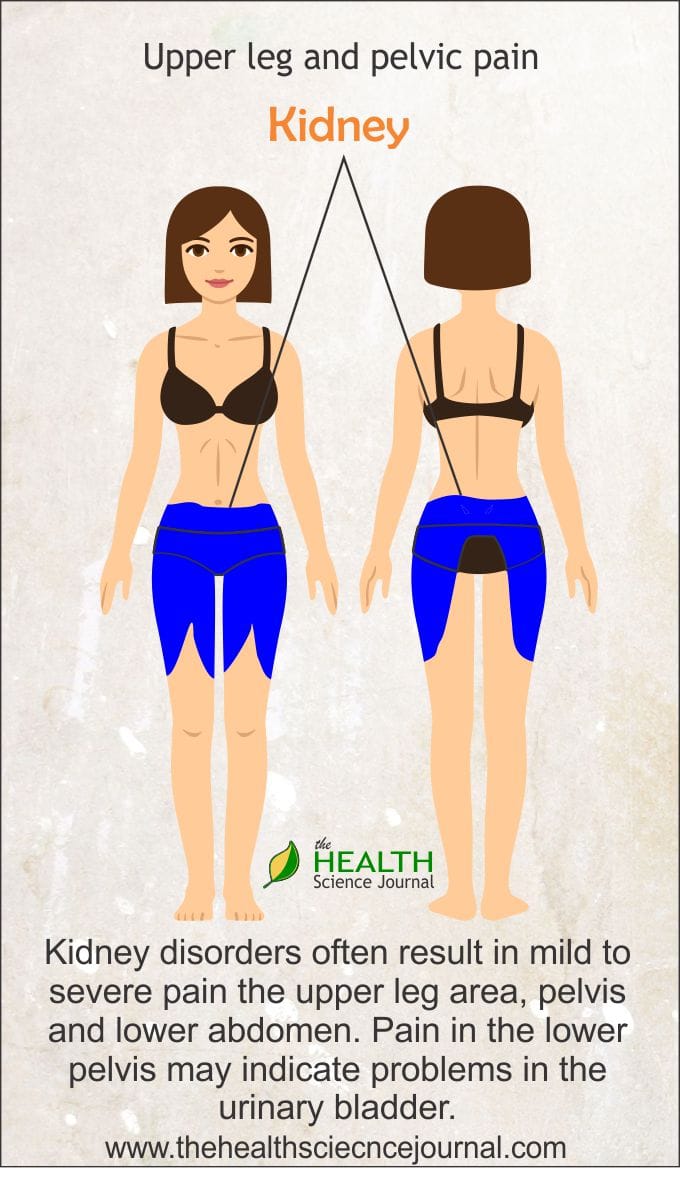
Problems with kidneys may cause referred pain covering a wide area, including the lower back, abdomen, pelvis, and upper portions of the legs.
Kidney pain can manifest as pain affecting the lower back region in the flanks, just below the ribs. However, this area is also commonly affected by back pain (like sciatica) caused by a sedentary lifestyle. To understand the differences between kidney and back pain, please check our article here.
Kidney troubles are extremely important to diagnose early, so try to see a doctor as soon as possible.
8. Bladder
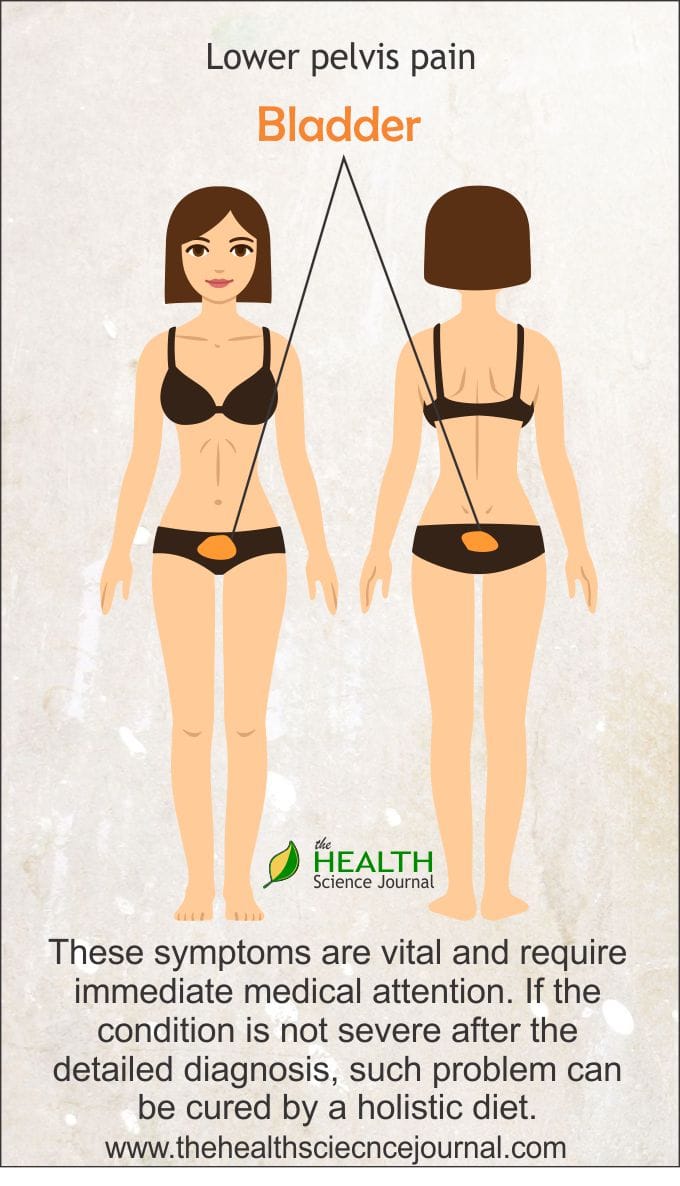
Bladder issues can lead to pain of the lower pelvis, on the front or the back side.
As the bladder is located in the lower back, an infection here may cause referred pain to the lumbar area.
The bladder is associated with many serious illnesses. A pain in this area, especially when accompanied by any other urinary issues, should be a sign that a medical exam is needed.
9. Ovary
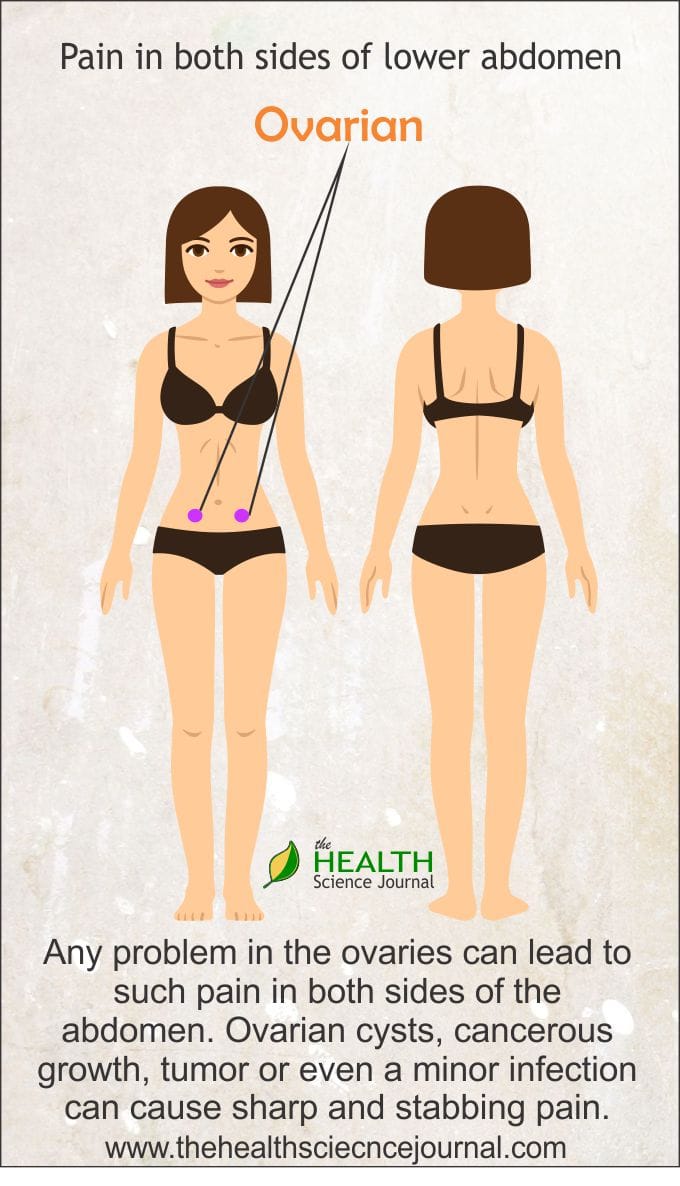
Health issues involving the ovaries can cause pain on either side of the abdomen.
Womens Health Advice notes that “ovarian cysts can cause sharp, stabbing pain (usually on one side of the abdomen).”
Ovarian cancer is a serious and life-threatening disease. Any severe abdominal pain should be checked out by a doctor just to be on the safe side.
Diagnosing the underlying cause of referred pain is crucial to an early discovery of many life-threatening diseases. And while not every pain is a cause for panic, it is important to be well-informed and understand how symptoms in one area can be associated with issues in a different area. Regular check-ups save lives, but so do irregular ones, especially when frequent or intense pain is involved.
